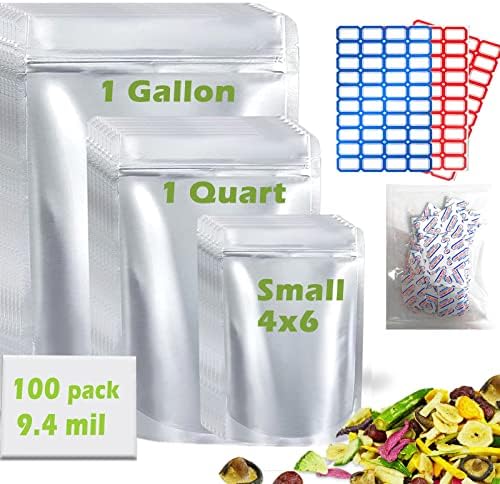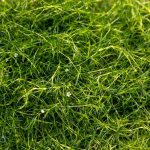
In the world of today, where the safety of the food and its preservation are the matters of concern, Mylar bags are the most popular option for long-term food storage. This type of bags can be used to keep the fruits and vegetables from losing their freshness and taste. This guide will serve as a comprehensive study of Mylar bags for food storage and will explore the advantages, types, usage, best practices and common mistakes.
Introduction to Mylar Bags
What are Mylar Bags?
Mylar bags for food storage are manufactured from a resin called BoPET (biaxially oriented polyethylene terephthalate). These bags are famous for their exquisite barrier property, which makes them suitable for holding a wide range of perishable substances, including food items. Mylar bags for food storage offer an effective solution for preserving the freshness and flavor of various food items, ensuring that provisions remain fresh and safe for extended periods.
Importance of Food Storage
The efficient storage of food is indispensable for maintaining the product’s nutritional value and extending its shelf life. Whether you want to stock up on food in time of emergency, prepare for adventures outdoors or simply just want to minimize food waste, Mylar bags are a perfect solution for keeping your provisions fresh and safe.
Advantages of Mylar Bags in Food Preservation
Airtight Seal
The Mylar bags are known for their ability to form a completely airtight seal when properly sealed. This hermetically sealed package prevents air, moisture, and other contaminants from getting into the bag, and therefore preserves the freshness and quality of the foods it holds.
Light Protection
Mylar bags are successful at blocking both UVA and visible light, preventing harmful photochemical reactions and ensuring the long-term integrity of the contents. This protection prevents degradation and spoilage of the stored food caused by the light, thus ensuring that your stored food remains in excellent condition for a long time.
Durable Material
Mylar bags, which are specially made from the best BoPET film, are very resilient and they are not prone to punctures, tears, and abrasions. This durability saves the integrity of the packaging and increases the longevity of the stored food items making Mylar bags a valuable storage method for a long term.
Types of Mylar Bags
Stand-Up Pouches
Stand-up pouches are versatile Mylar bags that feature a gusseted bottom, allowing them to stand upright when filled. These bags are convenient for storing various food items, including grains, legumes, snacks, and more.
Ziplock Bags
Ziplock Mylar bags are equipped with a resealable zipper closure, providing easy access to the contents while maintaining a secure seal. These bags are ideal for storing smaller quantities of food items that require frequent access.
Vacuum Sealed Bags
Vacuum-sealed Mylar bags utilize a vacuum sealer to remove excess air from the packaging before sealing. This process helps prolong the shelf life of perishable items by minimizing oxygen exposure and preventing oxidation.
How to Use Mylar Bags for Food Storage
Preparation Steps
Before using Mylar bags for food storage, it’s essential to ensure that they are clean, dry, and free of any debris or contaminants. Additionally, gather all the necessary supplies, including oxygen absorbers and a heat sealer, to facilitate the packing process.
Filling and Sealing Process
To fill Mylar bags, carefully pour the desired quantity of food items into the bag, taking care not to overfill it. Once filled, remove any excess air from the bag using a vacuum sealer or by pressing out the air manually. Finally, seal the bag using a heat sealer, ensuring a tight and secure closure.
Proper Storage Conditions
Store Mylar bags in a cool, dry, and dark environment away from direct sunlight and heat sources. Avoid exposure to moisture, humidity, and extreme temperatures, as these can compromise the integrity of the packaging and the quality of the stored food items.
Best Practices for Food Storage with Mylar Bags
Oxygen Absorbers
When storing oxygen-sensitive food items, such as grains, flour, and dehydrated foods, consider adding oxygen absorbers to the Mylar bags before sealing them. These packets help absorb excess oxygen within the packaging, further extending the shelf life of the contents.
Labeling and Organization
Maintain proper labeling and organization of Mylar bags to facilitate easy identification and rotation of stored items. Clearly label each bag with the contents, date of packing, and any other relevant information to ensure efficient inventory management.
Rotation of Supplies
Regularly rotate your stored food supplies to prevent spoilage and ensure that older items are consumed before newer ones. This practice, known as “first in, first out” (FIFO), helps maintain freshness and prevents waste by utilizing the oldest stock first.
If you want to know more information about custom poly mailer bags with logo visit TopUSAPackaging
Common Mistakes to Avoid
Overfilling Bags
Avoid overfilling Mylar bags, as this can compromise the effectiveness of the seal and increase the risk of punctures or tears. Leave some empty space at the top of the bag to allow for proper sealing and expansion of the contents.
Improper Sealing
Ensure that Mylar bags are properly sealed to prevent air and moisture infiltration. Pay close attention to the sealing process, ensuring that the heat sealer is applied evenly across the entire width of the bag for a secure closure.
Exposure to Moisture
Protect Mylar bags from exposure to moisture and humidity, as these can accelerate spoilage and mold growth within the packaging. Store bags in airtight containers or bins to shield them from environmental moisture.
Conclusion:
In conclusion, Mylar bags stand as a reliable solution for preserving the freshness, flavor, and nutritional value of various food items. With their exceptional barrier properties, durability, and versatility, Mylar bags offer an effective means of long-term food storage for both home and commercial use. By following proper storage practices, including the use of oxygen absorbers, labeling, and rotation of supplies, individuals can maximize the shelf life of their provisions and minimize food waste.
Read also: Elevating Your Brand with Custom Hot Dog Boxes
FAQs:
-
How long can food last in Mylar bags? The shelf life of food stored in Mylar bags can vary depending on factors such as the type of food item, storage conditions, and packaging methods. However, when stored properly in a cool, dry environment with oxygen absorbers, many foods can last for several years or even decades.
-
Can Mylar bags be reused? While Mylar bags can technically be reused, it’s important to note that their effectiveness may diminish with each use. Reusing Mylar bags can compromise the integrity of the seal and increase the risk of contamination, so it’s generally recommended to use new bags for optimal food storage.
-
Are Mylar bags safe for storing food? Yes, Mylar bags are considered safe for storing food. They are made from FDA-approved materials and are free from harmful chemicals or toxins. When used properly and in conjunction with oxygen absorbers, Mylar bags provide a secure and hygienic environment for preserving a wide range of food items.
-
Can Mylar bags be used for long-term food storage? Yes, Mylar bags are well-suited for long-term food storage due to their excellent barrier properties and durability. When stored in appropriate conditions and with proper sealing techniques, Mylar bags can help extend the shelf life of perishable goods, making them an ideal choice for preppers, outdoor enthusiasts, and anyone seeking to stockpile provisions for future use.
-
Where can I purchase Mylar bags? Mylar bags are readily available for purchase online, as well as in specialty stores and retailers that cater to emergency preparedness and food storage supplies.










